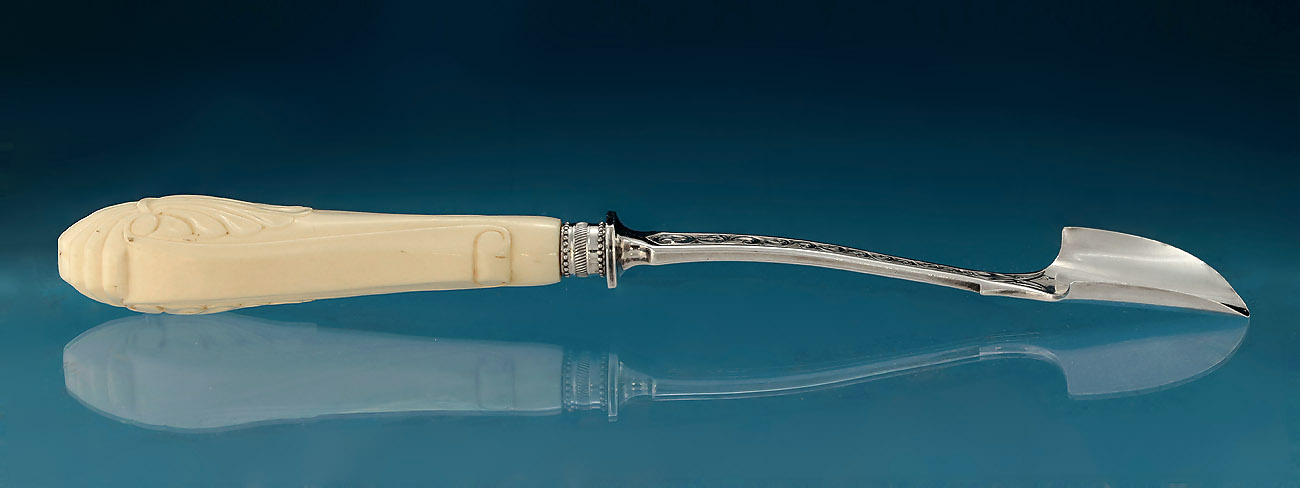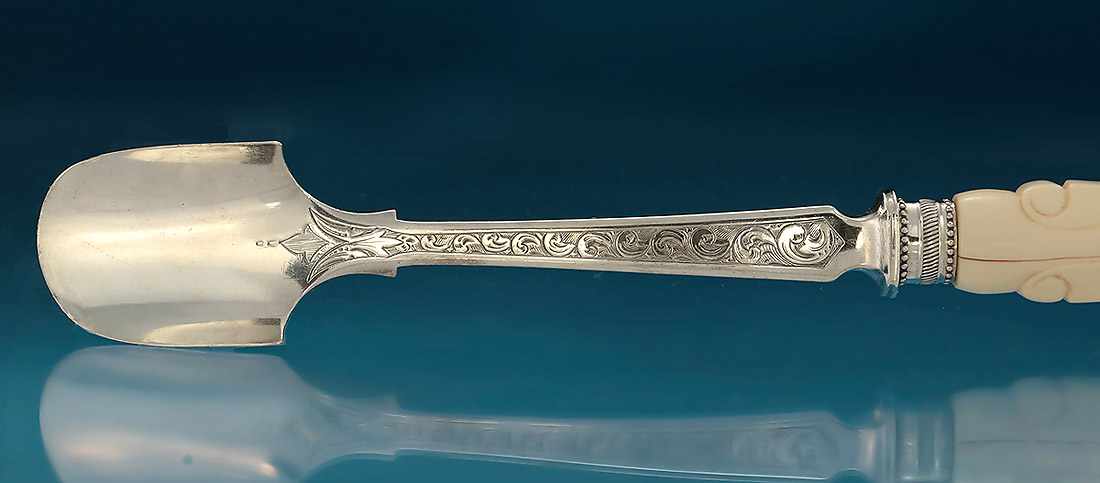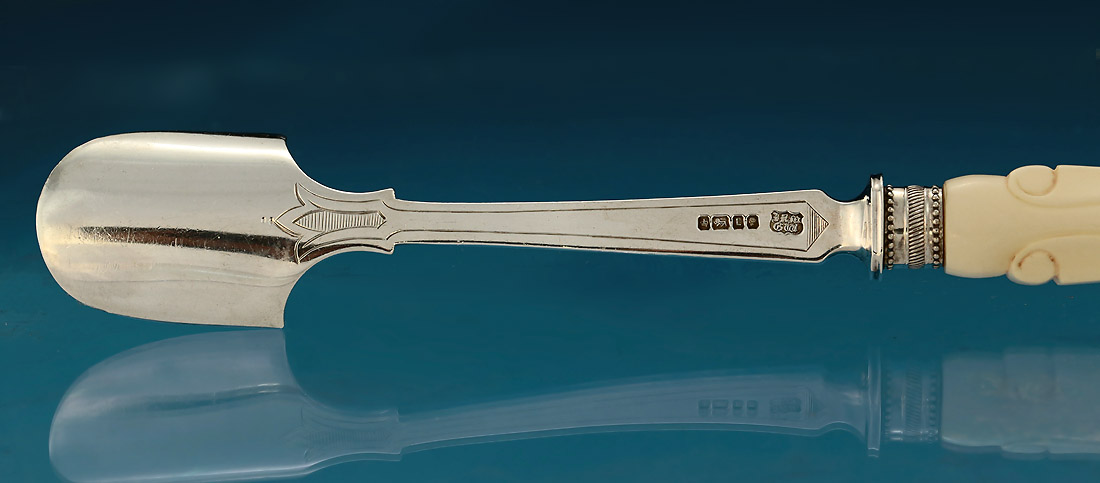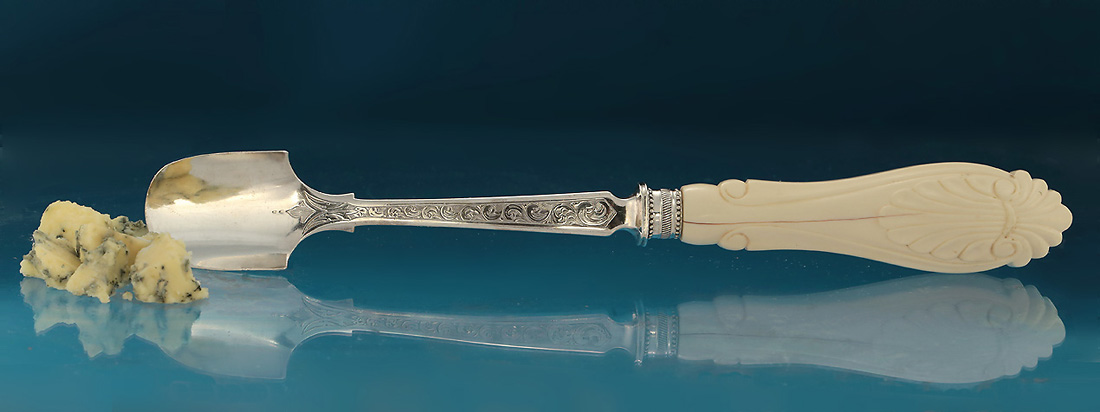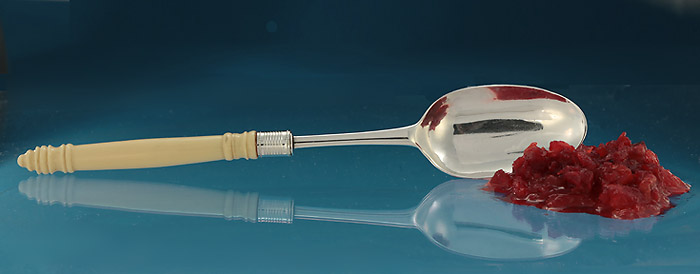The heavy shovel form scoop wave-engraved to the shaft with beaded and
finely gadrooned ferrule,
the handle with anthemion carved terminal
Condition: excellent
quality and weight; crisp marks;
the bowl with several very tiny dents to the rim; a stable age crack to one side the handle
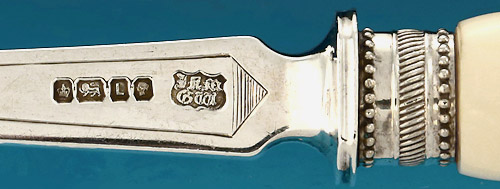
Stilton cheese, introduced c1720, is named for the village of Stilton,
about 80 miles north of London - although it was never made there.
In the 18th century, the town of
Stilton was a staging post for coaches,where horses
were changed
and weary travelers sought refreshment en route to Scotland and other Northern cities.
In fact, the inn owners vied with one another
to see who could provide the swiftest service and best food.
Cooper Thornhill, the landlord of the famous Bell Inn, introduced these travelers to
the creamy,
blue-veined cheese, which he purchased from cheese maker, Frances Pawlett of nearby
Melton Mowbray.
In 1789, Mr. Thornhill, being something of an
entrepreneur, staged an illegal bare-knuckle boxing
match,
erecting a tent for over 3000 spectators, many of whom were
impeccably
dressed gentlemen in frock coats and high
collars.
As wine, bread and Stilton cheese were plentiful, perhaps
some gentleman
bent his silver spoon and determined to have
his silversmith to invent the new implement.
This is conjecture, but
Stilton cheese scoops appears shortly thereafter in
1790.
They were popular until c1914, when wedges of cheese
replaced the whole of half Stilton wheel.
Stilton, the King of Cheeses, is best served at
room temperature,
needing a curved implement for serving without crumbling.
It is still made in much the same way as it was
in the early 1700's,
when a local Wymondham saying became popular :
"Drink a pot of ale, eat of scoop of
Stilton, every day, you will make 'old bones'."
4.7 oz. / 10.25" Long
Price : Please Inquire
#4800
|



